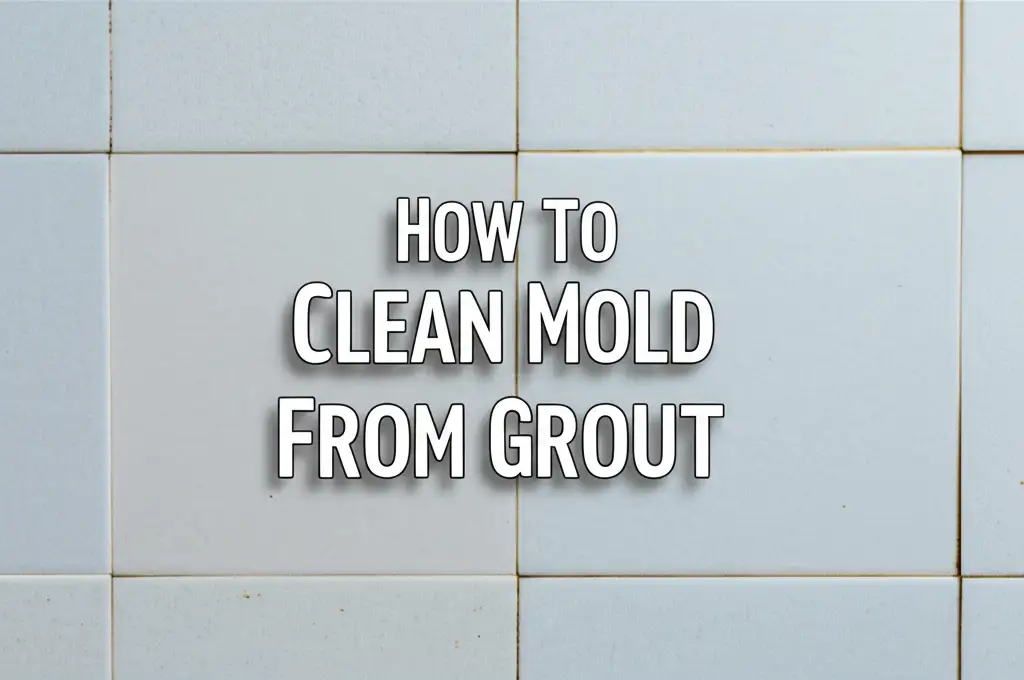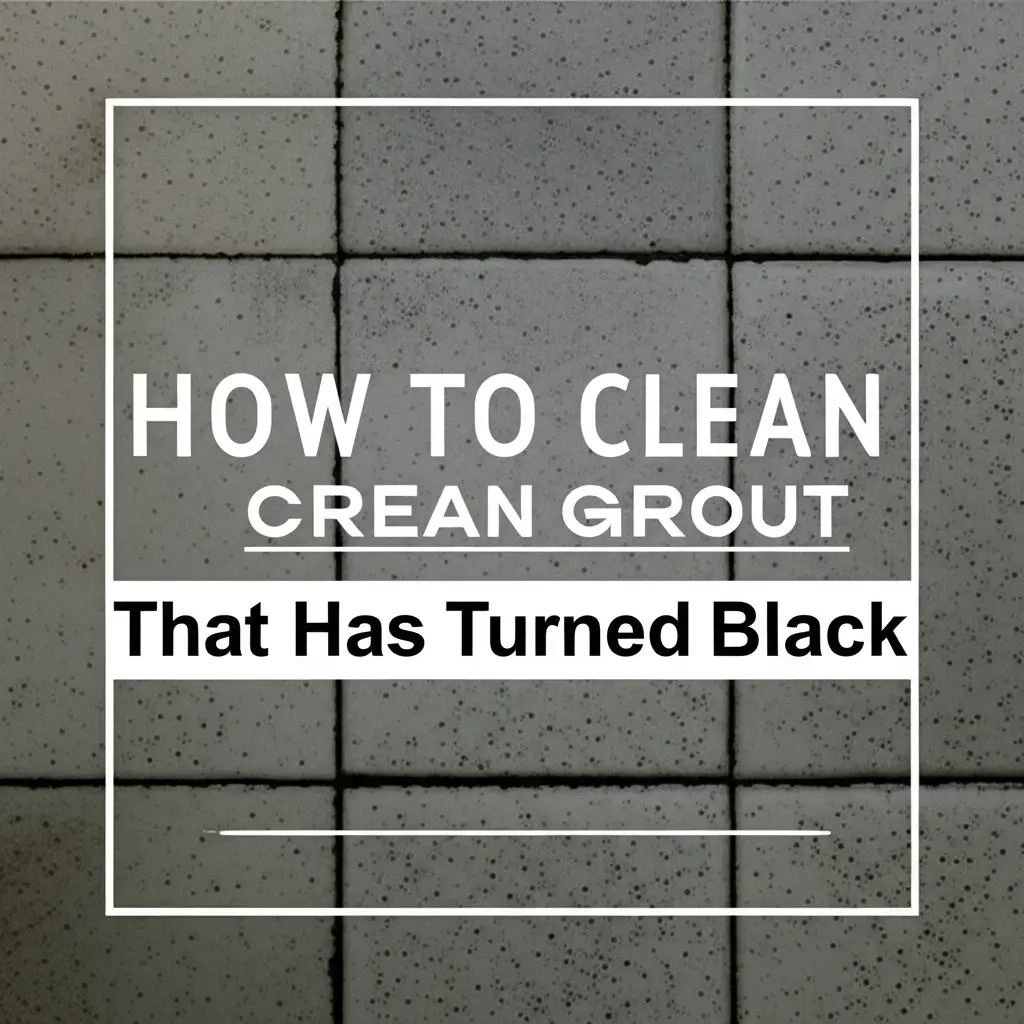· Home Cleaning · 11 min read
How To Clean Mold From Grout

Effective Strategies to Clean Mold from Grout
Mold on grout is a common problem in many homes. It often appears in bathrooms, kitchens, and other humid areas. This dark, unsightly growth can make your tiled surfaces look dirty. More importantly, mold can affect air quality. Knowing how to clean mold from grout is essential for a healthy home.
I understand the frustration of seeing mold creep across your beautiful tiles. This guide provides clear steps and effective solutions. We will explore safe methods using common household items and stronger cleaners. You will learn the best ways to remove mold. You will also discover how to keep it from coming back.
Takeaway
- Always wear protective gear during mold cleaning.
- Choose the right cleaning agent for your grout type and mold severity.
- Apply cleaners correctly and allow sufficient dwell time.
- Scrub thoroughly to remove all mold particles.
- Rinse surfaces completely to remove residue.
- Implement preventative measures to stop future mold growth.
Mold on grout forms due to moisture, warmth, and organic matter. You can effectively clean mold from grout using simple household items like vinegar or hydrogen peroxide for mild cases. For tougher mold, a diluted bleach solution works. Always ensure proper ventilation and wear protective gear.
Why Mold Grows on Grout: Understanding the Problem
Mold needs specific conditions to grow. Grout provides an ideal environment. It is porous and often absorbs moisture easily. This makes grout a prime spot for mold spores to settle and multiply.
Bathrooms are common places for mold. Showers produce a lot of steam and humidity. Kitchens can also have high humidity, especially near sinks. Water splashes often sit on grout lines. This trapped moisture creates perfect conditions for mold to thrive. Poor ventilation keeps the air moist, further encouraging mold growth. Mold consumes organic material found in dirt, soap scum, and dead skin cells. These materials often collect on grout surfaces. Without regular cleaning, mold finds plenty of food. Understanding these factors helps you clean mold from grout more effectively.
Mold often appears as black, green, or even pink discoloration. It can spread quickly if left untreated. Recognizing why mold grows helps you choose the best cleaning methods. It also helps you prevent future problems. Knowing the cause allows you to address the root issue. You can then stop mold from returning.
Essential Safety Precautions for Mold Removal
Cleaning mold requires careful preparation. Your safety is most important. Mold spores can irritate your respiratory system. They can also cause skin reactions. Protecting yourself prevents these issues.
First, wear personal protective equipment (PPE). This includes rubber gloves to protect your hands. Safety goggles shield your eyes from splashes and airborne spores. A face mask or respirator prevents you from inhaling mold particles. This is important for your lungs.
Second, ensure good ventilation in the work area. Open windows and turn on exhaust fans. This helps clear the air of mold spores and cleaning fumes. Poor ventilation traps these harmful substances. Fresh air helps dissipate them quickly.
Third, never mix cleaning products. Mixing certain chemicals, like bleach and ammonia, creates toxic fumes. These fumes are dangerous to breathe. Always read product labels before use. Follow all instructions carefully. Proper safety steps make the job safer and more effective. You can clean mold from grout without harm. These precautions protect your health.
Gentle Solutions for Mild Grout Mold
You do not always need harsh chemicals for mold. Many natural solutions work well on mild mold. These options are safer for you and your home. They are also good for regular maintenance.
White vinegar is a common household cleaner. It is a mild acid that can kill many types of mold. You can mix equal parts white vinegar and water in a spray bottle. Spray the solution directly onto the moldy grout. Let it sit for about 15-30 minutes. This gives the vinegar time to work. After waiting, scrub the grout with a stiff brush. Rinse the area thoroughly with water. Vinegar is safe for most grout types. You can find more details on using vinegar for mold here: how to clean mold with vinegar.
Hydrogen peroxide is another excellent choice. It is a mild bleach that kills mold and lightens stains. Use a 3% hydrogen peroxide solution. Apply it directly to the moldy grout. Let it sit for 10-15 minutes. Scrub with a brush and rinse well. Hydrogen peroxide is effective and safe for colored grout. It breaks down into water and oxygen, leaving no harmful residues. For more information on using hydrogen peroxide for grout cleaning, visit: how to clean grout with hydrogen peroxide.
Baking soda paste works well for light mold and scrubbing. Mix baking soda with a little water to form a thick paste. Apply the paste directly to the mold. Let it sit for a few minutes. Then, scrub vigorously with a brush. The abrasive texture of baking soda helps lift the mold and dirt. Rinse the area clean. These gentle solutions are a good starting point. They often remove mold from grout effectively.
Tackling Tough Grout Mold Stains
Sometimes, mild methods are not enough. Stubborn mold needs stronger cleaning agents. Bleach and commercial mold removers are powerful. They can remove deep-set mold stains.
Bleach is a very effective mold killer. It also whitens grout lines. Mix one part bleach with one part water. Apply this solution carefully to the moldy grout. Let it sit for 5-10 minutes. Do not let it dry on the surface. Scrub the grout with a stiff brush. Ensure you rinse the area completely with clean water. Open windows and use fans when using bleach. This ensures good airflow. Bleach can strip color from grout if left too long. Always test a small hidden area first.
Commercial grout cleaners are also an option. Many products specifically target mold and mildew. Read the instructions on the product label carefully. Some cleaners are sprays, others are gels. Apply the product as directed. Most require a dwell time before scrubbing. They often contain strong chemicals. Always wear gloves and eye protection. Ensure the area is well-ventilated. These products can be very effective. They work well for black mold that has deeply stained the grout. For very dark grout, you might be interested in this article: how to clean grout that has turned black.
Always consider the type of grout you have. Some cleaners might not be suitable for all materials. For example, highly acidic cleaners can damage natural stone tiles. Always check the product’s compatibility with your tile and grout. Using these stronger solutions helps you clean mold from grout when other methods fail.
A Step-by-Step Guide to Cleaning Grout Mold
Cleaning mold from grout follows a clear process. Following these steps ensures effective removal. It also helps protect your surfaces. I will guide you through each stage.
Step 1: Prepare the Area
First, clear the area of any items. Remove bath mats, bottles, or decorations. Sweep or vacuum loose dirt and debris from the floor or walls. This prevents dirt from spreading during cleaning. Ensure good ventilation. Open windows or turn on the exhaust fan. Wear your protective gear: gloves, goggles, and a mask.
Step 2: Apply Your Chosen Cleaner
Select your cleaning solution. For mild mold, use vinegar or hydrogen peroxide. For tough mold, use a bleach solution or commercial cleaner. Apply the cleaner directly to the moldy grout lines. Use a spray bottle for liquids. For pastes, apply with a spatula or old toothbrush. Make sure the mold is fully saturated.
Step 3: Allow Dwell Time
Let the cleaner sit on the grout. This “dwell time” allows the solution to penetrate and kill the mold.
- For vinegar or hydrogen peroxide: 15-30 minutes.
- For bleach or commercial cleaners: 5-10 minutes. Do not let the solution dry out. Reapply if needed during this time.
Step 4: Scrub the Grout
Use a stiff-bristled brush. A grout brush is ideal. An old toothbrush also works for small areas. Scrub the moldy grout vigorously. Focus on the discolored areas. The scrubbing action helps lift the mold and stains. You will see the grout lightening as you scrub. For areas like your shower, this process is key: how to clean grout in shower. This method also applies to overall shower tile cleaning: how to clean shower tiles and grout.
Step 5: Rinse Thoroughly
Rinse the cleaned grout with plenty of clean water. You can use a spray bottle with water. A wet sponge or cloth also works. Wipe away all cleaning solution and mold residue. Ensure no cleaner remains on the grout or surrounding tiles. Remaining cleaner can cause damage or leave a film.
Step 6: Dry the Surface
Finally, dry the cleaned area completely. Use a clean, dry towel or cloth. You can also run a fan to help airflow. Drying prevents new mold growth. Moisture is mold’s best friend. Complete drying is vital for prevention. These steps help you clean mold from grout successfully.
Special Considerations for Different Grout Types
Not all grout is the same. Different types need specific care. Knowing your grout prevents damage. It ensures safe and effective cleaning.
Cement-based grout is porous. It absorbs water easily. This makes it prone to mold growth. Most cleaning methods work on cement grout. However, highly acidic cleaners can etch or degrade it over time. Always rinse thoroughly after using strong chemicals. Sealing is critical for cement grout. This adds a protective barrier. It makes the grout less absorbent.
Epoxy grout is non-porous and highly resistant to stains and mold. It does not absorb water. Mold rarely grows within epoxy grout itself. Instead, it usually grows on top of it. This means mold on epoxy grout is often easier to wipe away. You can use milder cleaners like vinegar or hydrogen peroxide. Harsh abrasive scrubbers can dull epoxy grout’s finish. Use soft brushes or cloths.
Colored grout needs special attention. Bleach can strip the color from cement-based colored grout. Test any strong cleaner in an inconspicuous spot first. This checks for colorfastness. If the cleaner affects the color, choose a milder option. Hydrogen peroxide is usually safer for colored grout than bleach. It brightens without bleaching color. Always be cautious with new cleaners. This ensures your grout stays vibrant and mold-free. Considering these factors helps you clean mold from grout correctly.
Preventing Mold from Returning to Your Grout
Cleaning mold is only half the battle. Preventing its return saves you time and effort. Mold loves damp environments. You can stop its regrowth with simple habits.
First, improve ventilation in areas like bathrooms. Run the exhaust fan during and after showers. Keep it running for at least 15-20 minutes afterward. Open windows if possible. This removes humid air. Less humidity means less mold. A dry environment prevents mold spores from settling.
Second, consider sealing your grout. Grout sealer creates a barrier. This barrier makes grout less porous. It prevents moisture and dirt from soaking in. Sealed grout is easier to clean. It also resists mold growth. Apply sealer after deep cleaning. Reapply it every 1-2 years. You can find more information here: how to clean grout before sealing. Sealing is a powerful preventative measure.
Third, maintain regular cleaning habits. Wipe down shower walls and grout after each use. Use a squeegee or towel to remove excess water. This removes moisture before mold can start. Use a daily shower spray. These sprays often contain mold inhibitors. They leave a thin protective film. Weekly cleaning with a mild cleaner also helps. Small preventative steps add up. They keep mold from returning to your grout.
FAQ Section
Is mold on grout dangerous?
Mold on grout can cause health issues. It releases spores into the air. These spores can trigger allergies, asthma, and respiratory problems in sensitive people. Black mold can be particularly harmful. Removing it quickly is important for health.
Can I use bleach on all grout?
Bleach is effective but use with caution. It is safe for white or light-colored cement grout. Bleach can fade or discolor colored grout. It can also damage natural stone tiles. Always test bleach in a small, hidden area first.
How often should I clean grout to prevent mold?
For bathrooms, weekly light cleaning helps prevent mold. Deep clean grout monthly or quarterly, especially in high-humidity areas. If you notice mold appearing, clean it immediately. Regular maintenance prevents major problems.
What is the best tool for scrubbing moldy grout?
A stiff-bristled grout brush is best. Its narrow head fits perfectly into grout lines. An old toothbrush can also work for tight spots. Avoid metal brushes, as they can scratch tiles or grout.
Does sealing grout prevent mold?
Sealing grout helps prevent mold. It creates a protective barrier. This barrier makes grout less porous. Water and grime cannot penetrate easily. Sealed grout is also much easier to clean. It resists mold growth, but it does not make grout mold-proof.
Conclusion
Cleaning mold from grout improves your home’s appearance. It also protects your family’s health. You have learned different methods to clean mold from grout. You can choose natural solutions like vinegar and hydrogen peroxide for light mold. Stronger cleaners like bleach work for stubborn stains. Always prioritize safety. Wear protective gear and ensure good ventilation.
Remember, prevention is key. Good airflow and regular cleaning keep mold away. Sealing your grout provides an extra layer of protection. A clean, mold-free home is a happy home. Do not let mold take over your grout. Take action now. Your efforts lead to cleaner, safer surfaces. You can achieve spotless grout.
- mold removal
- grout cleaning
- bathroom cleaning
- tile maintenance
- home cleaning tips
- black mold removal




